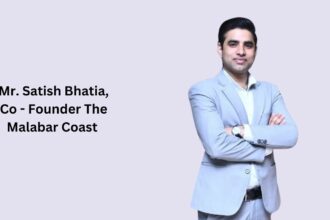Over a decade ago, one of the most sought-after training topics was ‘Time Management’. It was believed that people had so much on their plate that the only obvious way out was to learn and get better at managing their time.
I had a more hands-on experience with this as my first job in the training industry was with a training provider whose forte was ‘Self-Management’ – an upgraded concept to practical time management. We were taught that time management was not really about managing time per se, but how one manages the activities in relation to the time available. This in essence is why rather than managing time, we need to manage our “self”.
So back then, I would go out talking to people about this concept of managing our “self” to improve time management abilities. What I liked about the company was, we practice what we preached. In the company itself, it was made compulsory for all employees to use our own product – a time management tool, so we get to practise the time management techniques that we would train our clients on. Since we used to sell our training programmes in a package with includes the tool and the follow-up coaching sessions on how to use it, we were really drilled on “walking the talk”. The 5-odd years I had with them enabled me to really understand the concept and its application.
But there was one catch to this “great” experience. It was in the time when smartphones and social media was not yet a norm. Our biggest competitor at that time was only a PDA – Personal Digital Assistant device. Our “time management tool” looked like an elaborated diary. So, in comparison, the “sexiness” of using an electronic organiser would always seem more impressive and convincing than a “dinosaur technology” of planning using paper and pencil (Yes, we use a pencil because plans change and writing with a pen makes it difficult to reschedule stuff around). People even made remarks about not being “environmentally conscious” as a soft way to reject our tool; they liked the training though.
During my time in the company, I was a firm believer that the “complete package” was critical and necessary to ensure success of training – mindset, skillset, and toolset. In fact, after I left, I struggled to continue using the tool as the environment did not support for an effective use of the tool. No matter how much I plan for it, if the other party does not reciprocate, I am back to square one. At that point of time, I realised the challenges that some of my clients used to face – it was never about the tool, the techniques, and the self. It was a matter of understanding the core fundamentals – how we react in the environment that we are in.
Paying Attention to What’s Around Us
In recent years, gadgets have taken over most part of our lives. Almost everything can be done on the “small screen”. Now, we cannot even leave the house without our smartphones – as a matter of fact, we do not even need to leave our house! But considering how much time we have saved with the advancement of technology, how come many of us still struggle with time and finding that elusive “balance” in life?
With more and more people forced to work from home due to the pandemic, we see the lines between professional life and personal life gets more and more blurry. We used to point our fingers on our surroundings, but now suddenly there is no longer the need to face the morning traffic, there is no excuse to not be in time for dinner with our spouse, and we can interact with our kids as much as we like. So, environment was never really the issue. Then, what has been stealing our time all this while?
As it turns out, we rob ourselves of the time we have by not managing our attention properly. We can be eating dinner with our family, but our mind drifts of thinking about the proposal we need to send out tomorrow morning. We are at the park with our kids but, we are engrossed with uploading that perfect picture of the clouds on social media. We are sitting in front of the PC, staring at a half blank Word document, hoping that things will quickly go back to normal quickly so we can travel the world again.
We rob ourselves from being mindful – being fully present by controlling the distractions and focusing on the task in hand. We rob ourselves of the time to drift off and daydream to allow our mind to recuperate and regenerate fresh ideas – we pull our attention to our smartphones instead. Not giving ourselves room to “rest” and return, we always feel fatigued.
Attention management is a skill that is much needed now. It is something we took for granted, but now must reclaim. We cannot just let our attention be driven by outside factors without our consent. And to do this, we must train for it. Like walking, every able-bodied person can walk. However, to compete in a race-walking event, we must learn the rules and practise the proper walking method.
Control and Focus
Before going further, let us define “attention management”. Attention management is the act of conscious of practice of controlling distractions and maximising focus on being present in the moment.
The idea is to start of by being mindful and making conscious effort to control the potential distractions. By the way, distractions are the things that have the tendency to pull your attention away, whereas interruptions are disturbances from external factors. For example, closing the door to your room while you work is good at controlling interruptions but putting your phone on silent mode while you read in more likely to help you from being distracted by notification alerts coming in.
The goal of being mindful (the state of high control, high focus) is to stay in this state long enough until you get into the momentum of what you are doing and almost lose sense of time – this is now entering the stage of “flow”. Flow is where you have high focus but lesser need to control your self from being distracted. Because you are in the momentum, you should have no trouble getting the task completed.
Humans will get tired. And along with getting tired, our focus will also drop. If our focus plummets when we are in the state of low control, we fall at risk of losing our attention. The state of low control and low focus is when we start to become “reactive”. We react to any stimuli around us and will start to prioritise that. As the saying goes, “where attention goes, energy flows” – and this is exactly where we will end up if we do not manage our attention properly.
The final condition of attention management is “daydreaming”. Although the state of daydreaming often has a negative connotation to it, it is a necessary phase to allow our brain to relax and unwind. We cannot expect our mind to continuously churn out great ideas and working at full speed if we do not allow it to cool off. Daydreaming is necessary, especially every now and then, when we put down our guards and not focus on anything in particular – instead, allow it to wonder and think of other things without the pressure of being disturbed by other thoughts that demands our attention.

So, how does one learn to manage their attention? Well, it is always good to start by understanding our “self” first. Are we aware of how we function best? I am a “morning person”. I tend to favour the early mornings to work on heavy thinking stuff. I write, I plan and tend to get more done before in the morning before the rest of the world catches up. I am usually awake by 5am and prior to the pandemic, I would reach the office by 7:30am. Some people I know are “night owls” – they stay up late and work until the wee hours. There is nothing wrong with that, because attention management is not much about the time, it is more of the “timing” that matters; of course, as long as we produce the results.
This then leads us to the next shift that we need to make – thinking differently about how we plan our work. Prior to this, we may not think twice when scheduling something. We see an opening slot in our calendar, and we plot it in something. By understanding how we function best and knowing that we need to be mindful (consciously control distraction and focusing on the single task), it would be wiser to not cramp everything into “hourly slots” but instead block
of a larger portion of our day to do what you need to do. It may sound counter-intuitive, but if we want quality attention to be given to a specific task, then this method is necessary.
Next, is to be thoughtful of our decisions. We live in a time where we can catch a show on Netflix and chose to either binge watch the whole season or pace our selves and progressively watch an episode or two at a time. Decision making is crucial, and we need to be very decisive of what we want to do when.
Finally, going back to the basic concepts of self-management and time management, practise categorising and prioritising tasks consciously. If it is doable in 2 minutes or less, just get it done – no excuse needed. If it is something that can wait – like scrolling the social media aimlessly, do it during idle time like while cooling down after a 5km run or something like that. The ability to differentiate between what is important and not, is always relevant, especially when we know that attention, much like time, is scarce and needs to be used thoughtfully.
















